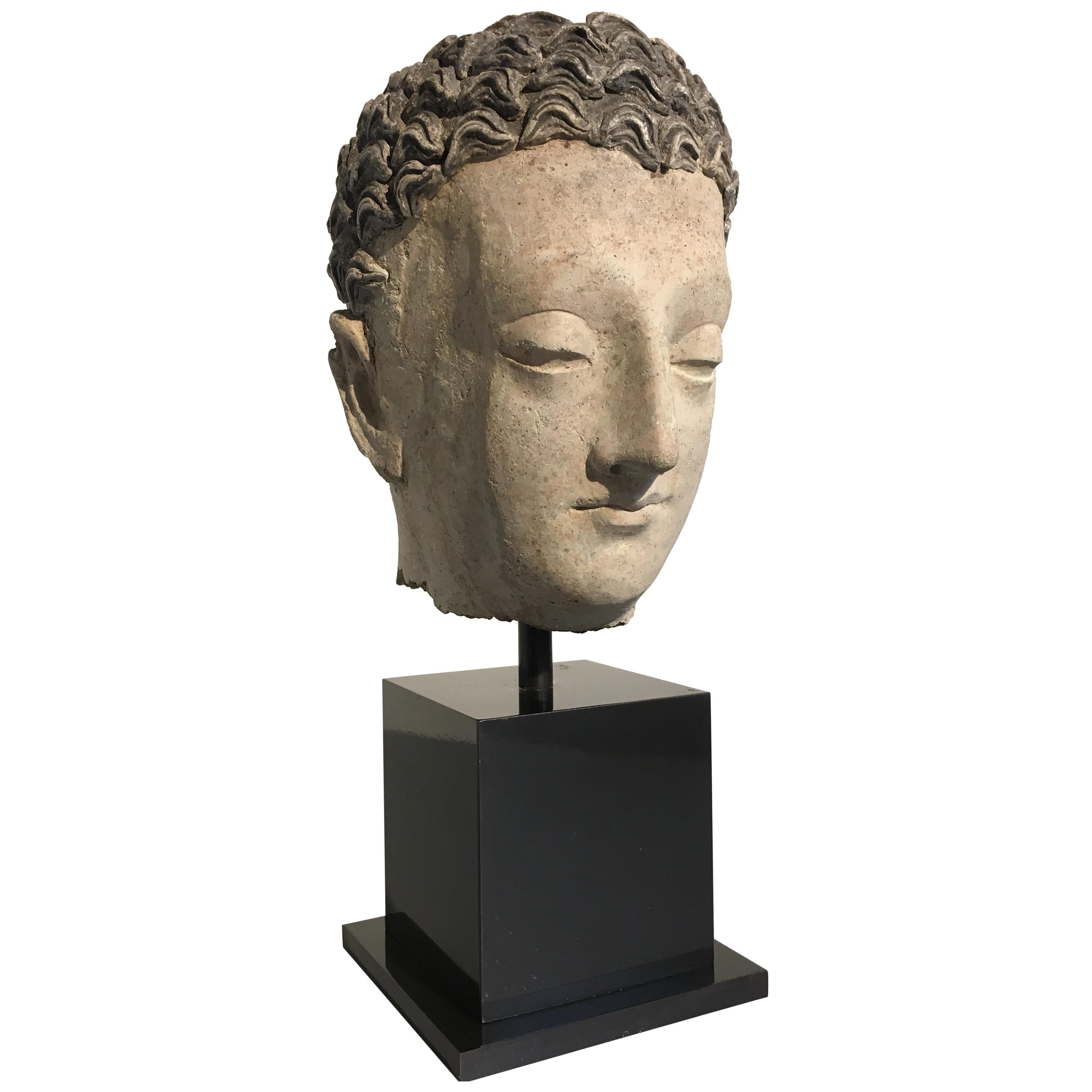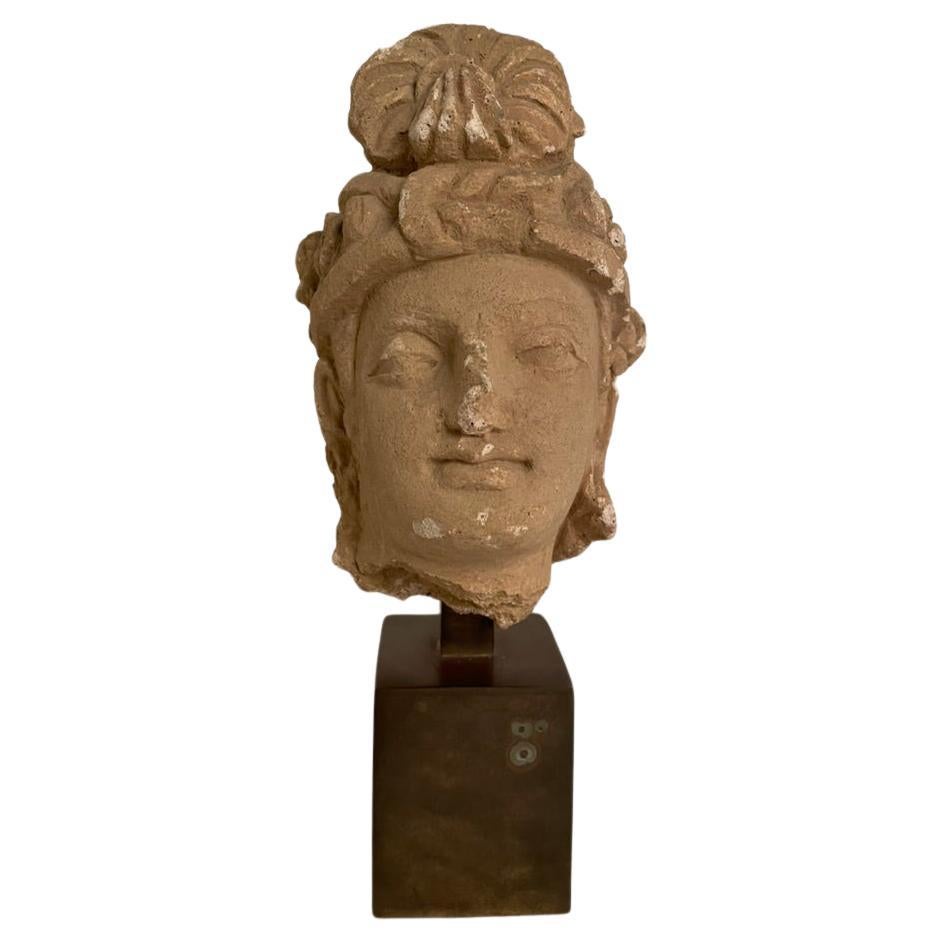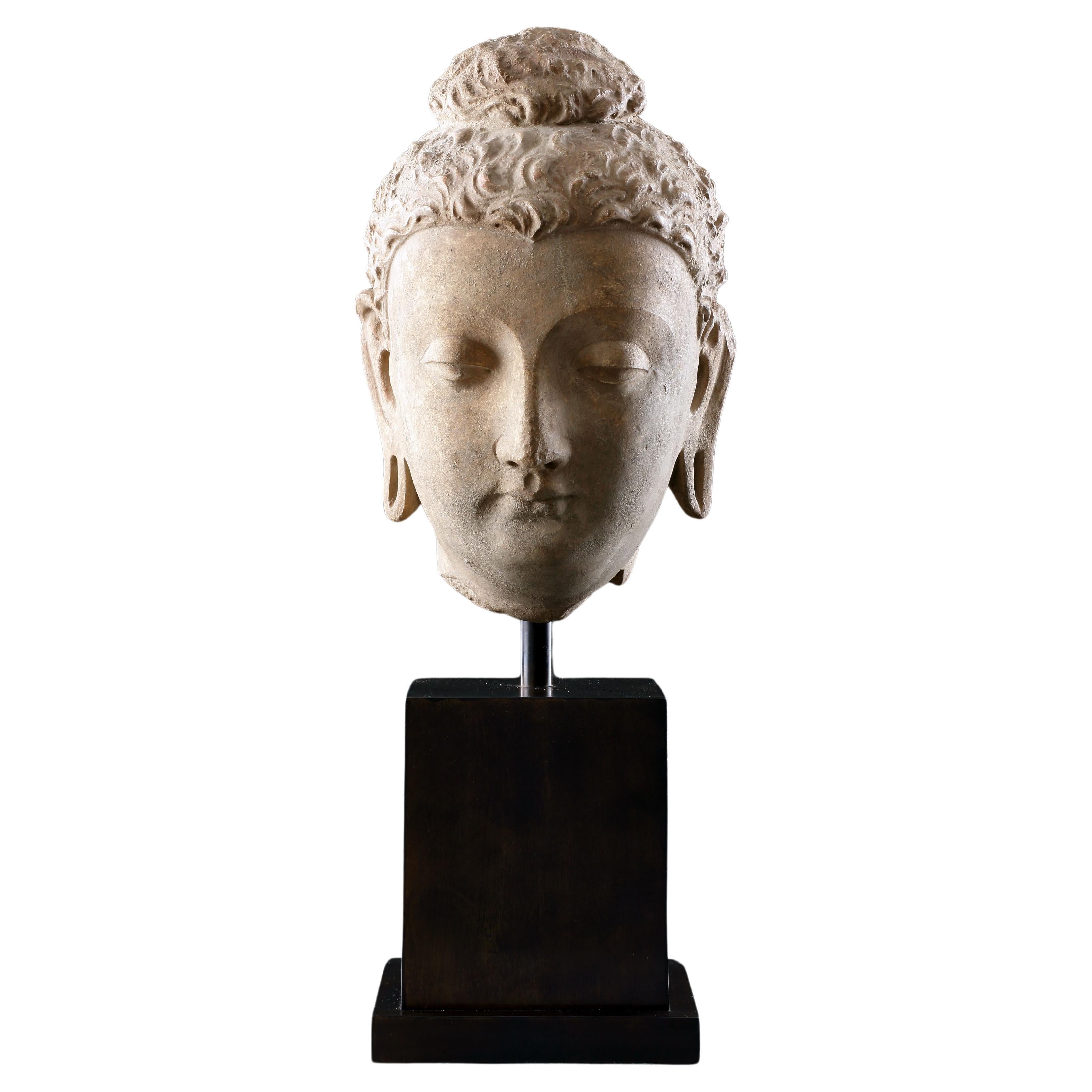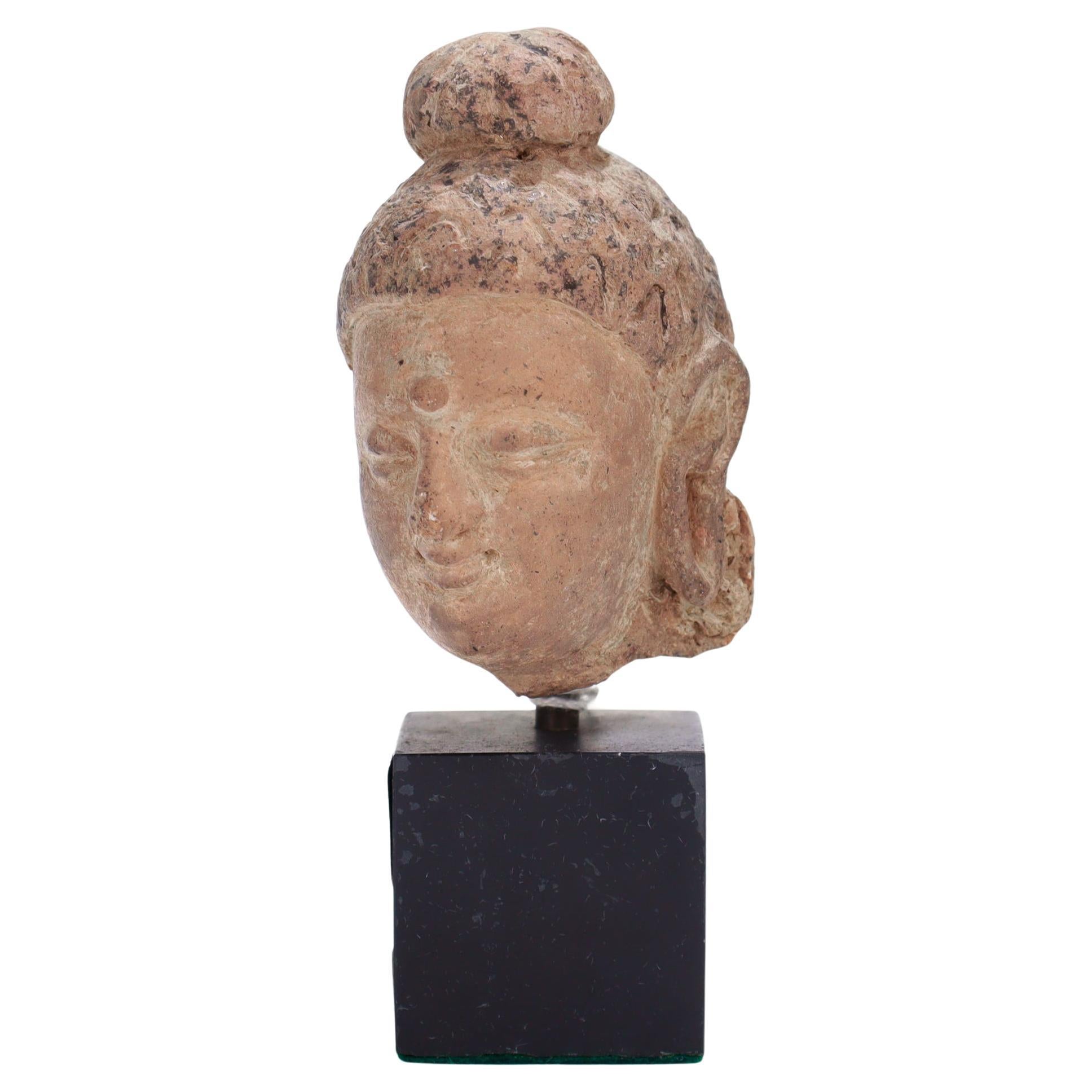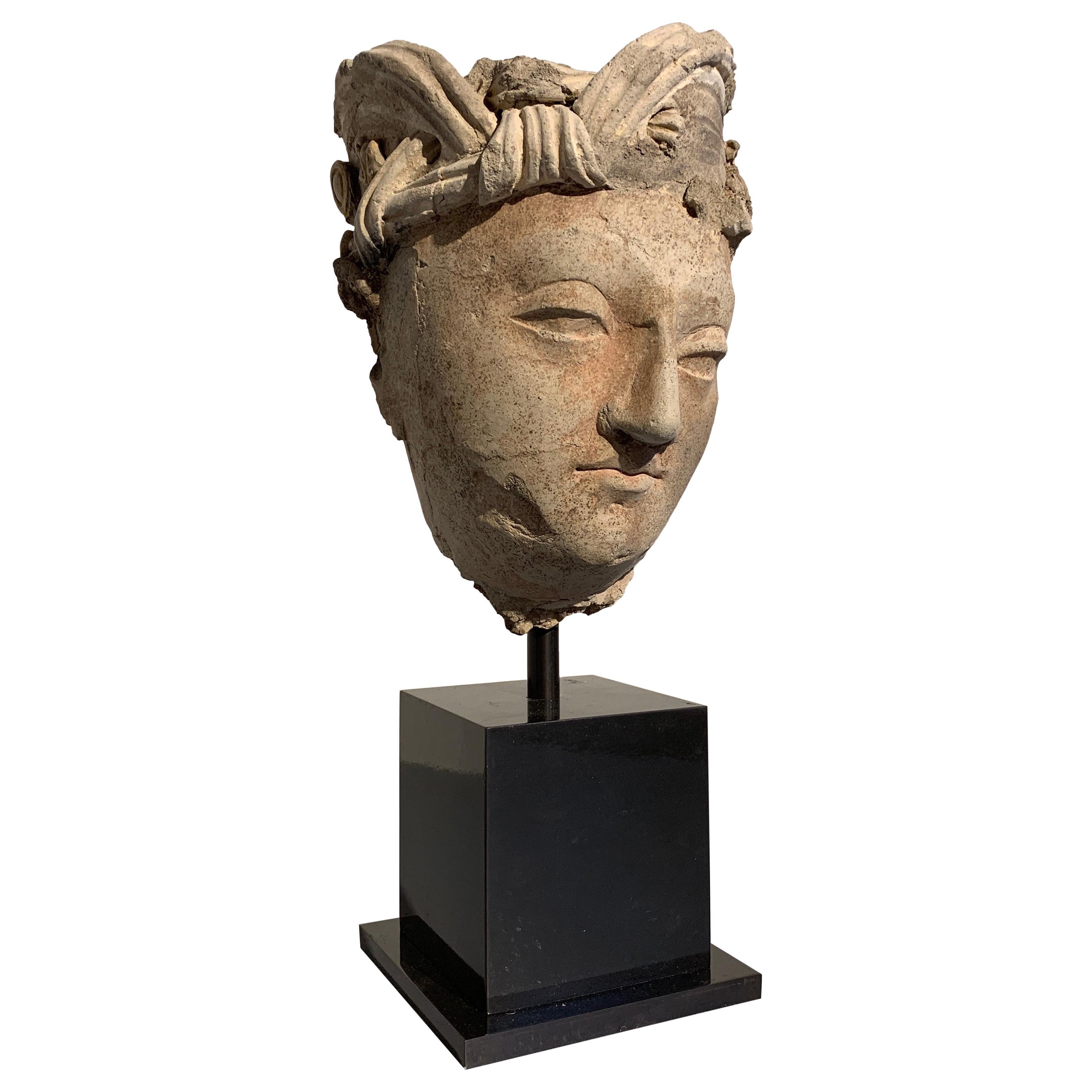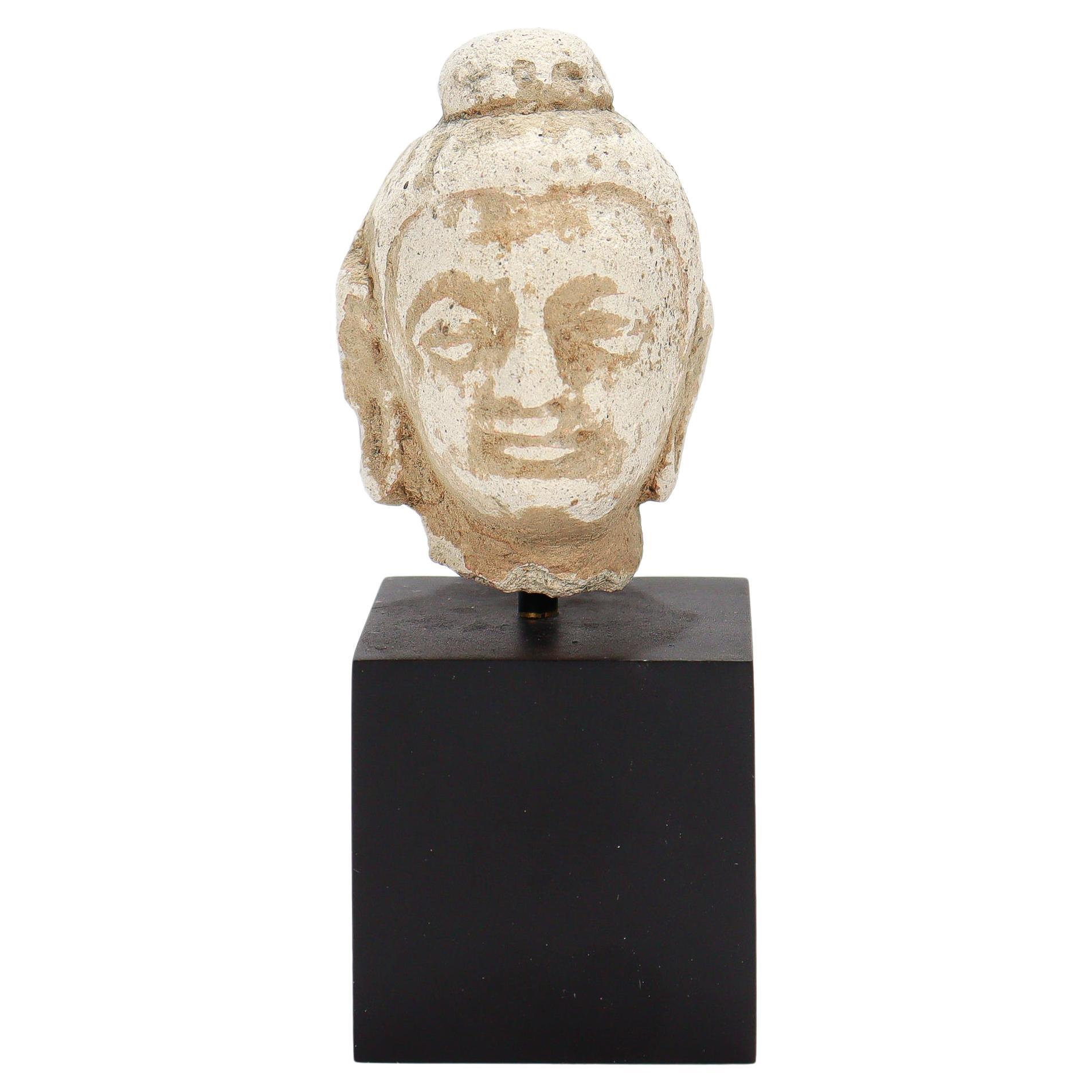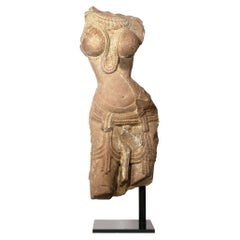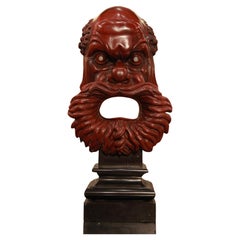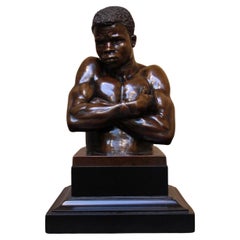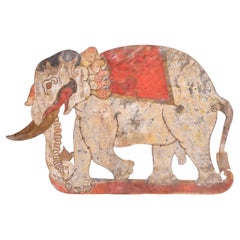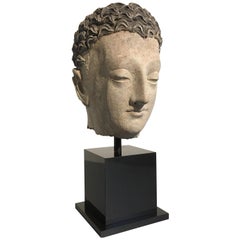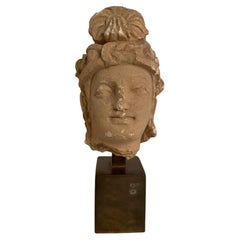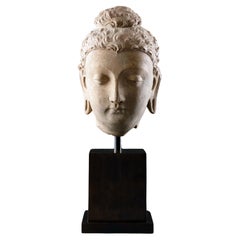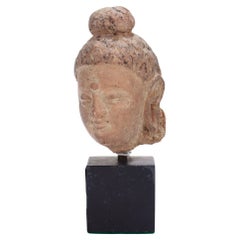Objekte ähnlich wie Gandharan Head of Buddha Grey Schist, 3rd to 4th Century
Möchten Sie mehr Bilder oder Videos?
Zusätzliche Bilder oder Videos von dem*der Anbieter*in anfordern
1 von 5
Gandharan Head of Buddha Grey Schist, 3rd to 4th Century
36.656,17 €
Angaben zum Objekt
The style of this sculpture points to its having been carved in the mature period of the 3rd to the 4th centuries when there was a smooth transition in the planes of the face which were longer and often oval in shape. Gandhara was the name for the Peshawar valley in what is now Pakistan and the name Gandhara is found in Vedic Sanskrit writing of the 2nd century BC. However the term Gandhara is also used to describe a style of sculpture which is found over a larger area which encompasses parts of the Hindu Kush, Afghanistan and Peshawar in Pakistan. The area was very important because of its geographical location; the rivers Kabul and Swat with their many tributaries joined and flowed together with further tributaries and rivers into the Indus. The wide valleys surrounding these waterways together with their location on the edge of the monsoon has supported, since pre-historic times, substantial agricultural communities and urban centres. This large area has been transited by many trade routes; through the mountain ranges of the Hindu Kush and the Himalayas to India in the South, the east-west route through the Hindu Kush, and the northern route along the Swat. Because of this geographical importance it was invaded numerous times including by the Iranian Achaemenid empire which was itself conquered by Alexander the Great in the 4th century B.C. Although Alexander had to abandon his advance in this area and it was absorbed into the earliest Indian empire (324-187 BC) there remained Greek settlers and rulers in parts of Gandhara until the beginning of the first century. (Numismatic evidence) The Buddhist expression of Gandharan art is the most well known and dates from the 1st century BC through the next 500 to 600 years and although scholars are still debating the importance of various influences in the area which was conquered many times, it is accepted that there is an obvious Graeco-Roman aspect to the sculpture. Of undoubted importance to the increasing popularity of Buddhism in the area and a probable influence on its style of art was the patronage of the Indo Greek king Menander who established an Empire in the 2nd century BC and may even have been a convert (his fascination with the cult is known and he is remembered in Buddhist literature as having discussions with the Buddhist sage Nagasena). Over the next few hundred years Buddhism was increasingly adopted in the area and it grew to become a Holy Land with religious foundations and places of pilgrimage.
Provenance: an old private collection in France Bibliography: A Catalogue of the Gandharan Sculpture in the British Museum by W. Zwalf Vol.II Plates 40 to 43
Dimensions:
42cm tall (including stand)
21cm wide
22cm deep
- Maße:Höhe: 43 cm (16,93 in)Breite: 19 cm (7,49 in)Tiefe: 22 cm (8,67 in)
- Materialien und Methoden:
- Herkunftsort:
- Zeitalter:
- Herstellungsjahr:3rd to 4th Century
- Zustand:Abnutzung dem Alter und der Nutzung entsprechend. Good.
- Anbieterstandort:London, GB
- Referenznummer:1stDibs: LU10128246976852
Anbieterinformationen
Noch keine Bewertungen
Geprüfte*r Anbieter*in
Jede*r Anbieter*in erfüllt strenge Standards bezüglich Echtheit und Zuverlässigkeit
1stDibs-Anbieter*in seit 2024
- VersandAngebot wird abgerufen …Versand von: London, Vereinigtes Königreich
- Rückgabebedingungen
Einige Inhalte dieser Seite wurden automatisch übersetzt. Daher kann 1stDibs nicht die Richtigkeit der Übersetzungen garantieren. Englisch ist die Standardsprache dieser Website.
Authentizitätsgarantie
Im unwahrscheinlichen Fall eines Problems mit der Echtheit eines Objekts kontaktieren Sie uns bitte innerhalb von 1 Jahr für eine volle Rückerstattung. DetailsGeld-Zurück-Garantie
Wenn Ihr Objekt nicht der Beschreibung entspricht, beim Transport beschädigt wurde oder nicht ankommt, kontaktieren Sie uns bitte innerhalb von 7 Tagen für eine vollständige Rückerstattung. DetailsStornierung innerhalb von 24 Stunden
Sie können Ihren Kauf jederzeit innerhalb von 24 Stunden stornieren, ohne jegliche Gründe dafür angeben zu müssen.Geprüfte Anbieter*innen
Unsere Anbieter*innen unterliegen strengen Dienstleistungs- und Qualitätsstandards, wodurch wir die Seriosität unserer Angebote gewährleisten können.Preisgarantie
Wenn Sie feststellen, dass ein*e Anbieter*in dasselbe Objekt anderswo zu einem niedrigeren Preis anbietet, werden wir den Preis entsprechend anpassen.Zuverlässige weltweite Lieferung
Unsere erstklassigen Versandunternehmen bieten spezielle Versandoptionen weltweit, einschließlich individueller Lieferung.Mehr von diesem*dieser Anbieter*in
Alle anzeigenAn Indian Red Sandstone Torso of a Devata – 10th/11th Century
An Indian Red Sandstone Torso of a Devata, Probably Rajasthan, the female deity depicted in tribhanga, her voluptuous body adorned with elaborate jewellery, wearing a sheer dhoti sec...
Kategorie
Antik, 15. Jahrhundert und früher, Indisch, Figurative Skulpturen
Materialien
Sandstein
Seltene geschnitzte Rosso-Antico-Maske in der Art von Benedetto Boschetti (1820-1860)
Die Maske oder "Maskaron" griechischer theatralischer Form, auf einem polierten schwarzen Marmorsockel, Gesamthöhe 56 cm, Sockel 18 cm breit, 13,5 cm tief Provenienz: Daniel Katz Ltd...
Kategorie
Antik, Spätes 19. Jahrhundert, Italienisch, Figurative Skulpturen
Materialien
Belgischer schwarzer Marmor
Shangaan-Bronzebüste von Anton van Wouw, 1907
Shangaan-Bronzebüste von Anton van Wouw, 1907 - Mächtiges Porträt eines Wanderarbeiters, gegossen von G. Nisini, Rom.
Bronze 30cm mal 20cm, mal 15cm (einschließlich Sockel)
Proveni...
Kategorie
Antik, Frühes 20. Jhdt., Englisch, Büsten
Materialien
Bronze
An Indonesian Wayang Kulit Shadow Puppet of Gajah (Elephant)
An Indonesian Wayang Kulit Shadow Puppet of Gajah (Elephant), Java, Indonesia, South East Asia, late 19th – early 20th century
Opaque pigments heightened in gold on hide, designed i...
Kategorie
Frühes 20. Jahrhundert, Indonesisch, Tierskulpturen
Materialien
Tierhaut
Shangaan-Bronzebüste von Anton van Wouw, 1907 - Mächtiges Porträt
Von Anton van Wouw
Shangaan-Bronzebüste von Anton van Wouw, 1907 - kraftvolles Porträt eines Wanderarbeiters, gegossen von G. Nisini, Rom - mit der Inschrift 'Anton van Wouw /
Bronze 30cm mal 20cm, ...
Kategorie
Frühes 20. Jahrhundert, Niederländisch, Büsten
Materialien
Bronze
Eine griechische Grabstele aus Marmor
Griechische Marmorstele in Form eines Naiskos, Giebel mit zentralem Rondell und Akroterien an den Ecken, mit einer hochreliefierten Szene in einer rechteckigen Nische, flankiert von ...
Kategorie
Antik, 15. Jahrhundert und früher, Griechisch, Historische Sammlerstücke
Materialien
Marmor
Das könnte Ihnen auch gefallen
Stuckkopf des Buddha aus Gandharan, 3.-5. Jahrhundert
Ein erhabener griechisch-buddhistischer Stuckkopf des Buddha, antike Region Gandhara, ca. 3. bis 5.
Als Fragment einer größeren Statue ist das Gesicht des Buddha kontemplativ, mi...
Kategorie
Antik, 15. Jahrhundert und früher, Pakistanisch, Figurative Skulpturen
Materialien
Stuck
Stuckkopf eines Bodhisattva aus Gandharan, 3.-5. Jahrhundert
Stuckkopf eines Bodhisattva, Gandhara, 3.-5. Jahrhundert ADS. Montiert auf einem speziell angefertigten Messingsockel.
12 Zoll hoch (Kopf allein 8,2 Zoll) 5,5 breit 5 tief
Provananc...
Kategorie
Antik, 15. Jahrhundert und früher, Skulpturen und Schnitzereien
Materialien
Stuck
Feiner gandharanischer Buddha-Kopf
Feiner gandharanischer Buddha-Kopf
Stuck mit "Erdpigment
Einige alte "Restaurierungen" an der Nase
Afghanistan
3. Jahrhundert ADS
Größe: 26cm hoch, 14,5cm breit, 14cm tief - 10¼...
Kategorie
Antik, 15. Jahrhundert und früher, Afghanisch, Antiquitäten
Materialien
Stuck
Antike gandharanische Miniatur-Stucco-Büste des Buddha, ca. 5. Jahrhundert
Eine schöne antike Stuckbüste auf einem Sockel.
In der Gestalt des Buddha, Siddhartha Gautama.
Montiert auf einem schwarzen Holzsockel.
Mit einem alten Stair Galleries Auktionseti...
Kategorie
Antik, 15. Jahrhundert und früher, Indisch, Skulpturen und Schnitzereien
Materialien
Terrakotta, Stuck
Stuckkopf eines Bodhisattva aus Gandharan, Region Hadda, 3.-5. Jahrhundert
Ein markanter gandharischer Stuckkopf eines männlichen Bodhisattva, der vorläufig als Manjushri identifiziert wurde, alte Region Gandhara, wahrscheinlich Hadda oder Umgebung, 3.-5. J...
Kategorie
Antik, 15. Jahrhundert und früher, Afghanisch, Hellenistisch, Skulpturen...
Materialien
Stuck
Antike gandharische Stuckbüste des Buddha oder Bodhisattva
Eine schöne antike figurale Büste.
In Stuck auf Terrakotta.
In der Form des Buddha oder eines Bodhisattva (möglicherweise Avalokiteśvara/Guanyin).
Montiert auf einem schwarzen Hol...
Kategorie
Antik, 15. Jahrhundert und früher, Indisch, Skulpturen und Schnitzereien
Materialien
Terrakotta, Stuck
